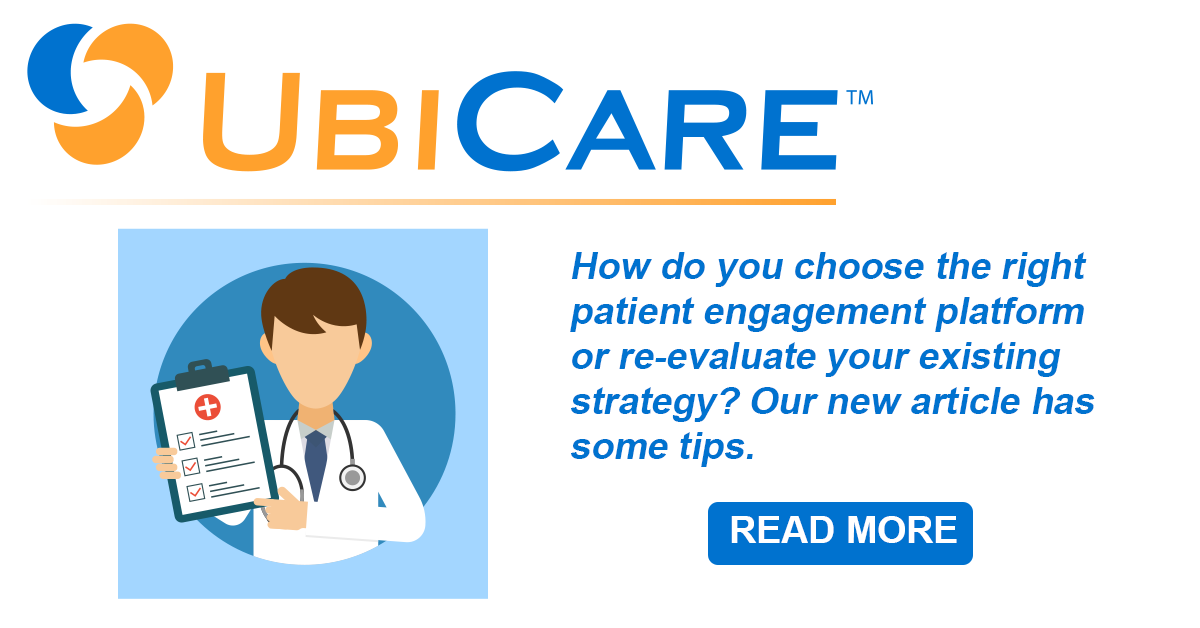Hospitals and healthcare professionals are increasingly realizing that digital patient engagement and patient activation can influence patient behavior and improve outcomes. Different platforms have been introduced to the market, each bringing a different menu of features and capabilities. As you consider your objectives for patient engagement, and your options for platforms that support those objectives, there are a couple of critical considerations to keep in mind.
Topics: Population Health, Patient Experience, patient activation, UbiCare, SmarteXp, early childhood, sports medicine, COPD, concussion, heart failure, stroke, bariatric, obesity, patient education, pregnancy, joint replacement, spine surgery, autism
Rural Health Day and the Need for More Care Options
More than 60 million Americans live in rural communities, where small hospitals strain to stay open amid increasing healthcare demands and dwindling revenue. Today, Nov. 15, 2018, is for them, and for the dedicated healthcare providers among them.
It’s National Rural Health Day, the third Thursday in November designated by the National Organization of State Offices of Rural Health to celebrate rural healthcare providers and call attention to the unique health needs of rural populations. More than 80 small community hospitals have closed since 2010; hundreds of others struggle to survive.
Telehealth services, now offered by several healthcare systems nationwide, have become a lifeline for rural patients who can’t always travel the distances required to reach urban hospitals for care. Physicians and other healthcare providers electronically communicate “face to face” with these patients to help them manage everything from influenza to chronic conditions such as diabetes or congestive heart failure.
But as demand for long-distance healthcare grows, telehealth isn’t the only solution (nor the best one) available to healthcare providers.
Topics: Population Health, Improving Patient Outcomes, Patient Experience, Innovation
Using Digital Health Technology to Improve Health Literacy
Only 12% of American adults are considered health literate. Why does this matter to patients and healthcare providers alike?
First, high levels of health literacy are associated with better patient self-care and outcomes. Second, attentiveness to this can be an effective way to improve population health. Digital health technology is a means to this end.
Topics: Population Health, Patient Engagement, Innovation, Healthcare Technology
How Can Hospitals Use Texting to Improve Patient Care?
When was the last time you talked to your friend? Your mother? Your old college roommate? Now think—did you actually talk to them? In person or on the phone?
If you’re like most Americans, you probably conversed with them via text, email or social media. In fact, a recent Gallup poll finds that texting and email are the most frequently used forms of non-personal communication for adult Americans. So is a cellphone, because even when we do use a phone, it’s typically not a landline, the survey reveals.
For all Americans under age 50, the survey finds that texting is the most dominant form of communication.
Given these changes in our own everyday interactions, why does the healthcare industry insist on sticking with old forms of communication?
Healthcare needs to embrace email and text as the preferred and most efficient patient-provider communication methods, just as we have accepted—and really, expected—email and text communication in our daily lives.
Topics: Population Health, Value-Based Care, Improving Patient Outcomes, Patient Experience, Innovation, Healthcare Technology, Texting in Healthcare










